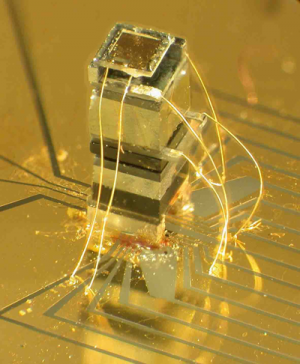Tiny magnetic sensor deemed attractive

Ultra-sensitive magnetic sensor technology pioneered at PML may soon be commercialized for a host of applications from detection of unexploded bombs and underground pipes to geophysical surveying and perhaps even imaging of the brain and heart.
In late October 2014, Geometrics of San Jose, CA announced a technology license and development agreement with Texas Instruments to develop miniature magnetometers derived from work done by scientists in PML's Atomic Devices and Instrumentation Group.
The original prototype device, produced in 2004 with funding from the U.S. Defense Advanced Research Projects Agency, featured a sensor about the size of a grain of rice that could measure changes in magnetic fields as small as one-millionth of the Earth's field and required minimal electrical power.
The device works by detecting tiny shifts – caused, for example, by magnetic properties of buried metals – in the way laser light interacts with an atomic vapor.
Provided by National Institute of Standards and Technology



















